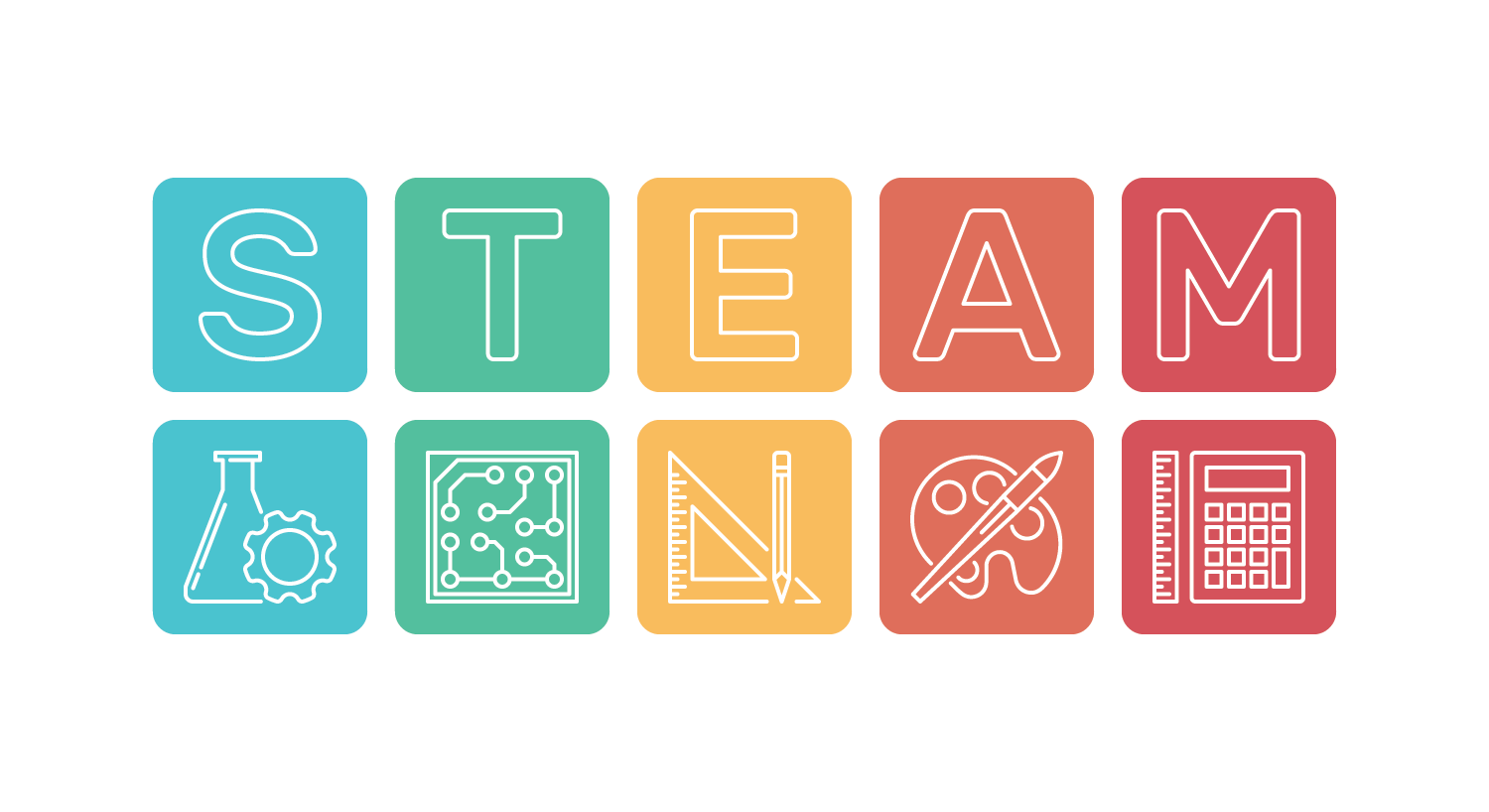
STEM education has been part of the standardized elementary and secondary curriculum since the early 2000s. It’s an integrated educational approach focused on science, technology, engineering, and math.
What does STEM stand for?
STEM stands for Science, Technology, Engineering and Math and is a formalized curriculum of the K-12 program. Many countries have adopted this curriculum into their basic education programs.

Students with good aptitude in the four focused subjects are the ones who tend to be accepted in the STEM strand during their senior high school years. They are the ones who follow a specialized course in science and technology subjects as preparation for college science education, as well as post-graduate degrees.
The difference between STEM & STEAM
The main difference between STEM and STEAM is the inclusion of the arts in the latter.
Advocates of STEAM education argue that adding arts subjects into a technical and scientific curriculum makes students more prepared and adaptable to the real world; that it encourages creativity and a more well-rounded perspective, which can be vital in problem-solving at the workplace.
What does STEM mean in school?
Depending on your jurisdiction or country, STEM education is either optional or compulsory for all high school students. In some countries, especially the more advanced and industrialized countries, STEM education starts at the elementary level; some aspects of it may even be integrated in preschool. For example, Finland has had a STEM education system since the 1970s and is a pioneer in educational reform.
But not all schools or countries have the technical capabilities and infrastructure to fully implement a compulsory science-oriented curriculum in their basic education programs. It would mean following higher standards in instructions, laboratory facilities, and academic requirements for students. Plus, not all students have the right aptitude for or interest in STEM subjects.
STEM education is an interdisciplinary but integrated approach aimed at training students to become future scientists, engineers, mathematicians, and technology innovators. Although there are other career opportunities that are open to STEM students, the curriculum is oriented towards scientific advancements. It would mean specially trained teachers who have the skills and academic knowledge in certain scientific fields. A school that offers STEM education must have highly qualified faculty and updated facilities to provide the right training for students.
What is a STEM education?

STEM education is a specialized curriculum in the K-12 program intended to prepare students for careers in various scientific disciplines. The U.S. formalized the STEM curriculum in 2001, when the acronym was changed from SMET (Science, Mathematics, Engineering, and Technology), which it was originally called by the National Science Foundation.
Historically, the origin of the idea of science-focused education dates back to the 1950s in the early years of the Cold War era. This is especially true when the Russians successfully launched the first ever artificial satellite into orbit, the Sputnik 1, in 1957. The U.S. government and the public in general became more motivated to out-compete the Russians.
That meant the quality of public education came into focus and became an ideological battleground. It was in the 1950s that federal funding for K-12 education began. Meanwhile, the National Science Foundation (NSF) was established during this decade. The primary mandate of the NSF is to “promote basic scientific research and education”.
However, it was not until the term of President Barack Obama that a much-needed boost in STEM education in the K-12 program was introduced. In 2009, the Educate to Innovate initiative was announced by the then-president.
The goal of this initiative was to boost the global ranking of U.S. students in the fields of science and mathematics. A key milestone of this initiative was the federal funding that increased the investment in STEM education, preparing 100,000 new STEM teachers.
Why is STEM education important?
STEM education is important primarily because of the progress of scientific knowledge and its applications in technology, industries, and economy.
A country can only have a competitive edge in a globalized economy if it has a workforce that is well-educated in STEM. Not everybody can and should become scientists and engineers, but many of the jobs available today still require some technical and scientific knowledge.
What are some STEM careers?
STEM education prepares students to pursue careers related to science and technology. However, not all career opportunities are in the academic, research, and industrial fields.
Some of the career opportunities available include office-based and freelance jobs - and it also includes careers that require creativity using technical skills and scientific knowledge, such as computer animation.
Here are some of the STEM careers that students may be interested in.
1. Computer systems administrator
Virtually all businesses are now dependent on computer systems. These include small and medium businesses that need inventory databases, payroll systems, and security monitoring systems.
The main task of a computer systems administrator is to enable that all the computerized systems in a business are functioning well. Knowledge in computer programming is essential for this job. High-tiered careers include government defense systems.
2. Information technology manager
An information technology manager handles not only computer systems, but also a team of computer programmers and systems administrators. The main task of an IT manager is to enable that all the IT-related needs of a company are met and regularly updated. The job may also involve liaising with other companies or branches of the same company.
3. Academicians or scientists
If you’re a STEM student, you may want to pursue a career in academia. Depending on your college major and additional academic qualifications, you may teach science or math subjects either in high school or university. You could also pursue research work in a particular scientific discipline.
4. Engineers and architects
Again, depending on your academic qualifications and formal training, you may want to pursue a career in engineering and work in industries or government, such as civil engineering, mechanical engineering, chemical engineering, or any other engineering careers.
A career in engineering is basically about applying scientific knowledge to make technological innovations. It encompasses designing machines and formulating new chemicals. Complimentary to engineering is architecture, which also incorporates artistic skills.
5. Statisticians
All empirical scientific studies require some statistical tools. A statistician is needed in all scientific endeavors. They are needed by social scientists and by physical scientists.
Statisticians are also needed in more “mundane” fields, such as market research. As a statistician, you can work in corporations and in government agencies that heavily rely on data analysis.
Summary
STEM education is focused on scientific and technology-related subjects in basic education, particularly in high school. It’s aimed at preparing students to pursue careers that require scientific knowledge and skills and provides a competitive edge to students in an increasingly competitive job market.
Are you an educator looking for STEAM resources for middle school, high school or university? Take a look at Arduino Education kits and how they can support your hands-on STEAM lessons.